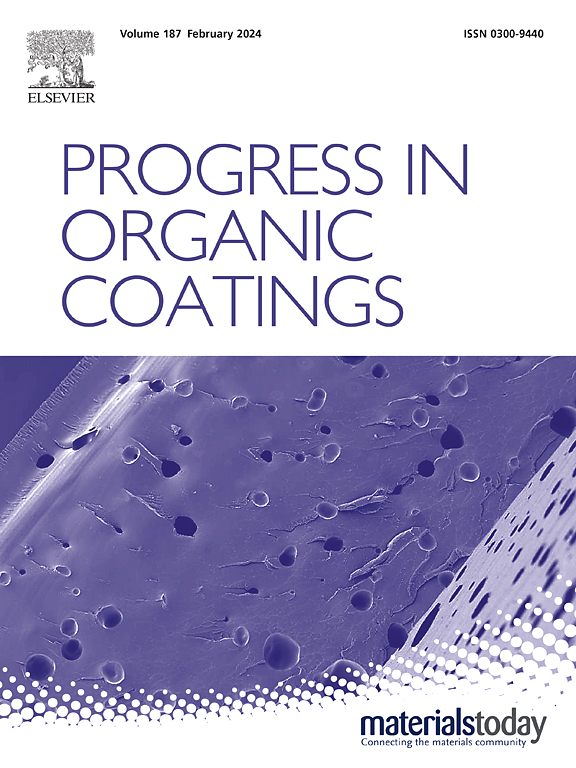Tempera paint solidification followed by single-sided NMR: An egg-cellent article that will dry you up
IF 6.5
2区 材料科学
Q1 CHEMISTRY, APPLIED
引用次数: 0
Abstract
The drying of an aqueous paint is an important criterion, since it determines not only the aesthetic aspect of the pictorial layer, but also its homogeneity and therefore the paint properties (especially its mechanical properties) and its durability over time. This article focuses on the physical drying of egg tempera paints, the most widely used technique in the Middle Ages. The egg yolk binder forms a film as it dries, which holds the pigment to the substrate. In the present study, the evaporation of water is monitored temporally and spatially using single-sided nuclear magnetic resonance (NMR), a non-invasive and non-destructive technique. Relaxometry is used to describe changes in the mobility of the different species in the yolk (mainly water and lipids) during the drying process. Inhomogeneities in the binder and paint films based on different pigments (azurite, lead‑tin yellow, sienna) are highlighted. Other changes in molecular mobility are recorded on longer time scales as a result of the chemical drying of egg yolk. This study provides the first characterization of the microstructure of tempera paints during the drying process and contributes to a better understanding of this artistic technique.
蛋彩漆凝固后,单面核磁共振:一个鸡蛋优异的文章,将干你
水性涂料的干燥是一个重要的标准,因为它不仅决定了绘画层的美学方面,而且还决定了它的均匀性,从而决定了涂料的性能(特别是其机械性能)和耐久性。这篇文章的重点是蛋彩画颜料的物理干燥,这是中世纪最广泛使用的技术。蛋黄粘合剂在干燥时形成一层膜,将色素固定在基质上。在本研究中,利用单面核磁共振(NMR)技术监测水的蒸发时间和空间,这是一种非侵入性和非破坏性的技术。松弛法用于描述干燥过程中蛋黄中不同物质(主要是水和脂类)流动性的变化。不同颜料(蓝铜矿、铅锡黄、锡蓝)的粘合剂和漆膜不均匀性突出。由于蛋黄的化学干燥,分子迁移率的其他变化记录在更长的时间尺度上。本研究首次对蛋彩画颜料在干燥过程中的微观结构进行了表征,有助于更好地理解这种艺术技术。
本文章由计算机程序翻译,如有差异,请以英文原文为准。
求助全文
约1分钟内获得全文
求助全文
来源期刊

Progress in Organic Coatings
工程技术-材料科学:膜
CiteScore
11.40
自引率
15.20%
发文量
577
审稿时长
48 days
期刊介绍:
The aim of this international journal is to analyse and publicise the progress and current state of knowledge in the field of organic coatings and related materials. The Editors and the Editorial Board members will solicit both review and research papers from academic and industrial scientists who are actively engaged in research and development or, in the case of review papers, have extensive experience in the subject to be reviewed. Unsolicited manuscripts will be accepted if they meet the journal''s requirements. The journal publishes papers dealing with such subjects as:
• Chemical, physical and technological properties of organic coatings and related materials
• Problems and methods of preparation, manufacture and application of these materials
• Performance, testing and analysis.
 求助内容:
求助内容: 应助结果提醒方式:
应助结果提醒方式:


